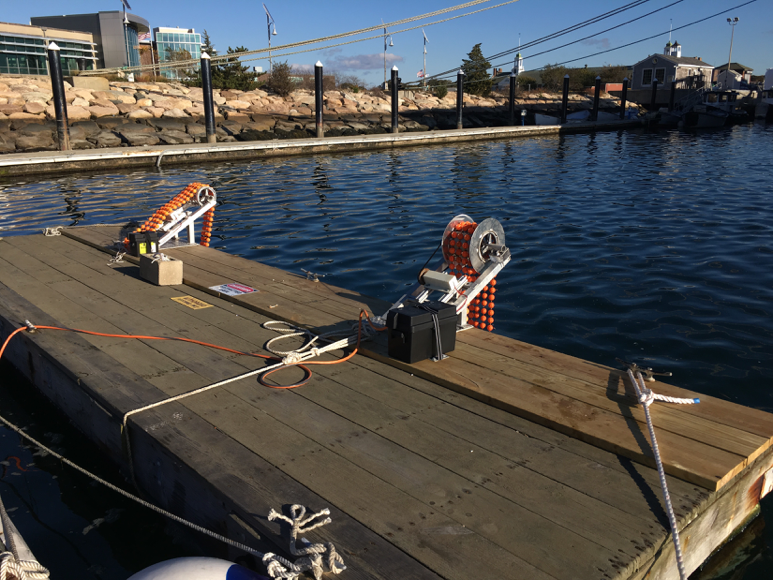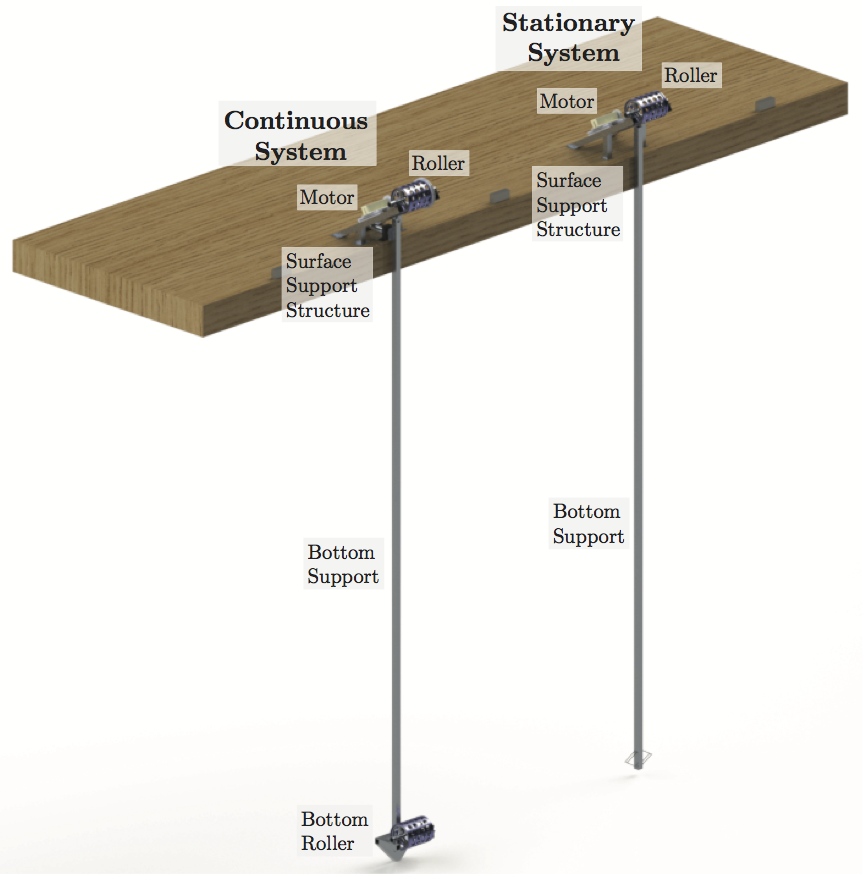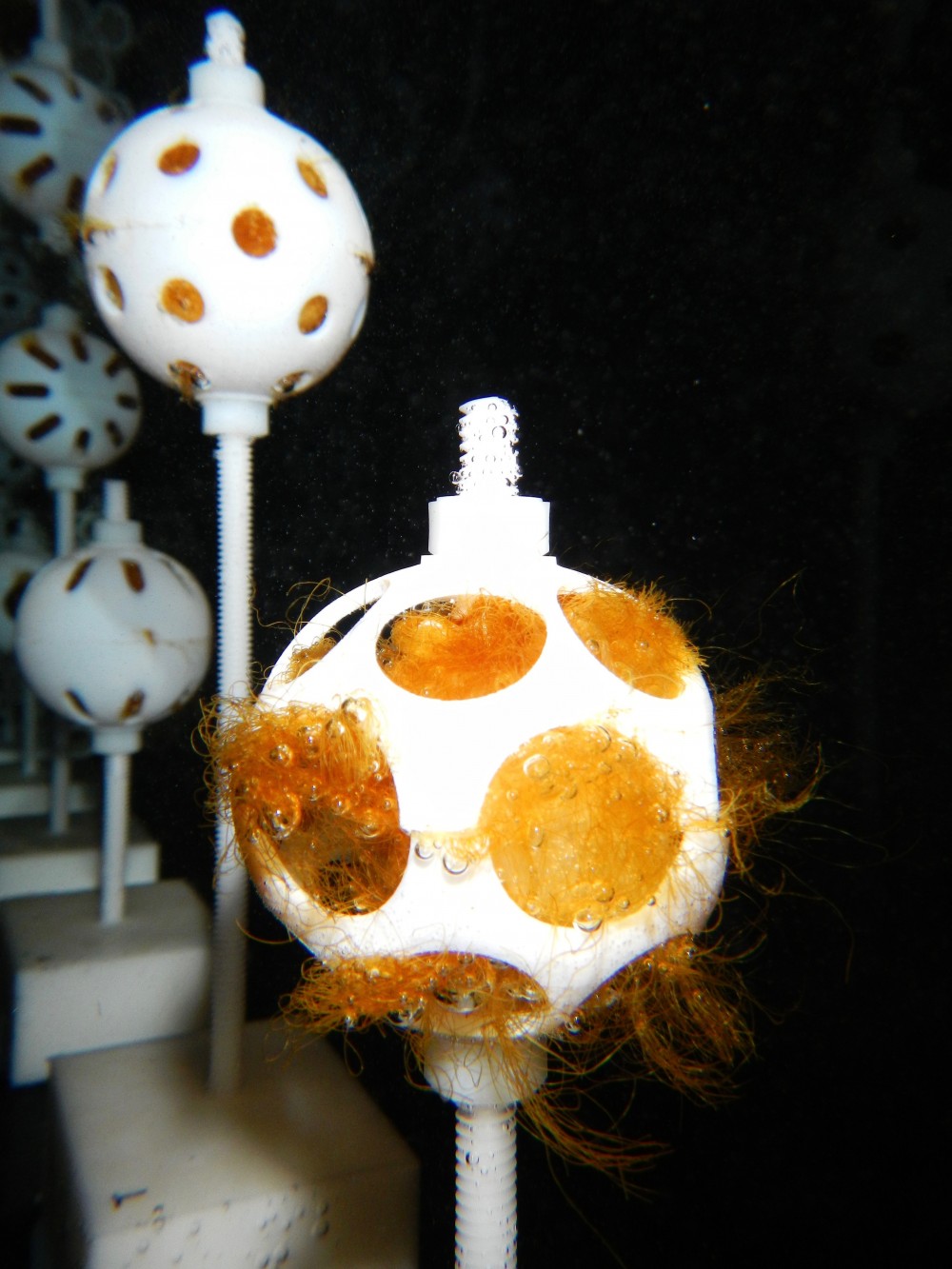Extraction of Uranium from Seawater
Terrestrial supplies of uranium are greatly limited. It is estimated that at the current consumption rate the global conventional reserves of uranium (7.6 million tonnes) could be depleted in a little over a century. Fortunately, uranium is present in the at a low concentration of 3ppb, which over the total volume of the oceans amounts to approximately 4.5 billion tonnes of uranium, nearly a thousand times that of conventional reserves. Finding a sustainable way to harvest uranium from seawater will provide a source of uranium for generations to come. For my PhD project, I am working with Prof. Alex Slocum in the Precision Engineering Research Group (PERG) to investigate ways to harvest uranium from seawater that are cost-efficient and highly survivable.

While extraction of uranium from seawater has been researched for decades, to-date no economical, robust, ocean- deployable method of uranium collection has been presented. Previous studies have focused on the deployment of adsorbent polymers in seawater, which remain submerged for a period of time, are then collected, brought to shore, stripped of their uranium by elution, and finally returned to the ocean. Such stand-alone, intermittent operation systems have significant economic challenges. Additionally, recent work has indicated that increasing the frequency of harvesting can increase the amount of uranium collected from the adsorbent. It is hypothesized here that a symbiotic approach to ocean harvesting of uranium, where a common structure supports several activities such as harvesting seawater, wave energy harvesting, or wind turbine support, could prove economically viable.

The goal of this project was to develop fundamental design tools for the development and evaluation of symbiotic systems to harvest uranium from seawater. I focused on the development of design rules for a uranium harvesting system that would be integrated into an offshore wind turbine. The initial concept involved an adsorbent device that was cycled through the seawater beneath the turbine and through an elution plant located on a platform above the sea surface. This design allowed for more frequent harvesting, reduced down-time, and a reduction in the recovery costs of the adsorbent.

Here’s a video of the 1/10th scale prototype system in action:
Publications that have resulted from this work include the following:
- M. N. Haji, J. Drysdale, K. Buesseler, and A. H. Slocum, “Results of an Ocean Trial of the Symbiotic Machine for Ocean uRanium Extraction,” Environmental Science & Technology, 53 (4), 2229-2237, 2019. [pdf] [published article]
- M. N. Haji, J. Gonzalez, J. Drysdale, K. Buesseler, and A. H. Slocum, “Effects of Protective Shell Enclosures on Uranium Adsorbing Polymers” Industrial & Engineering Chemistry Research, 57 (45), 15534–15541, 2018. [pdf] [published article]
- M. N. Haji, J. M. Kluger, T. P. Sapsis, and A. H. Slocum, “A Symbiotic Approach to the Design of Offshore Wind Turbines with Other Energy Harvesting Systems,” Ocean Engineering, 169, 673-681, 2018. [pdf] [published article]
- M. E. Flicker Byers, M. N. Haji, A. H. Slocum, and E. Schneider, “Cost Optimization of a Symbiotic System to Harvest Uranium from Seawater via an Offshore Wind Turbine,” Ocean Engineering, 169, 227-241, 2018. [pdf] [published article]
- M. N. Haji, J. M. Kluger, J. W. Carrus, T. P. Sapsis, and A. H. Slocum, “Experimental Investigation of Hydrodynamic Response of a Symbiotic Machine for Ocean Uranium Extraction combined with a Floating Wind Turbine,” International Journal of Offshore and Polar Engineering, 28(3), 225-231, 2018. [pdf] [published article]
- M. N. Haji, J. Drysdale, K. Buesseler, and A. H. Slocum, “Ocean Testing of a Symbiotic Device to Harvest Uranium from Seawater through the Use of Shell Enclosures”, In Proceedings of the Twenty-seventh (2017) International Ocean and Polar Engineering Conference, 177-185, San Francisco, CA, June 25-30, 2017. [pdf] [published article]
- M. N. Haji, M. E. Flicker Byers, E. A. Schneider, and A. H. Slocum, “Cost Analysis of Wind and Uranium from Seawater Acquisition symBiotic Infrastructure using Shell Enclosures”, Transactions of the American Nuclear Society, 116:89-92, 2017. [pdf] [published article]
- M. E. Flicker Byers, M. N. Haji, E. A. Schneider, and A. H. Slocum, “A Higher Fidelity Cost Analysis of Wind and Uranium from Seawater Acquisition SymBiotic Infrastructure”, Transactions of the American Nuclear Society, 115:271-274, 2016. [pdf] [published article]
- M. N. Haji, A. H. Slocum, “Design of a Symbiotic Device to Harvest Uranium from Seawater through the use of Shell Enclosures”, Transactions of the American Nuclear Society, 115:153-156, 2016. [pdf] [published article]
- M. N. Haji, C. Delmy, J. Gonzalez, A. H. Slocum, “Uranium extraction from seawater using adsorbent shell enclosures via a symbiotic offshore wind turbine device”, In Proceedings of the Twenty-sixth (2016) International Ocean and Polar Engineering Conference, 562-569, Rhodes, Greece, June 26-July 1, 2016. [pdf] [published article]
- M. N. Haji, C. Vitry, and A. H. Slocum, “Decoupling the functional requirements of an adsorbent for harvesting uranium from seawater through the use of shell enclosures,” Transactions of the American Nuclear Society, 113:158-161, 2015. [pdf] [published article]
